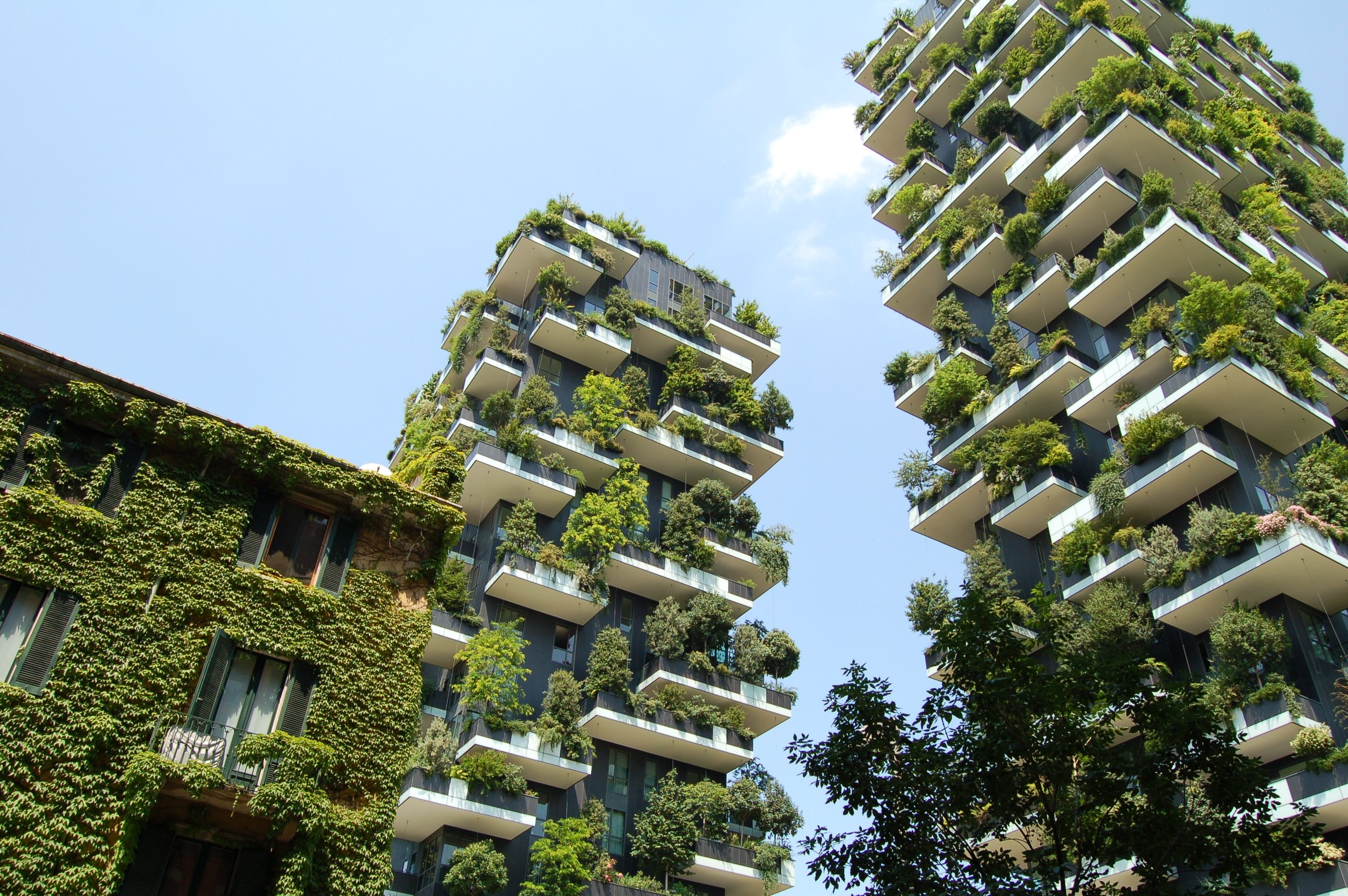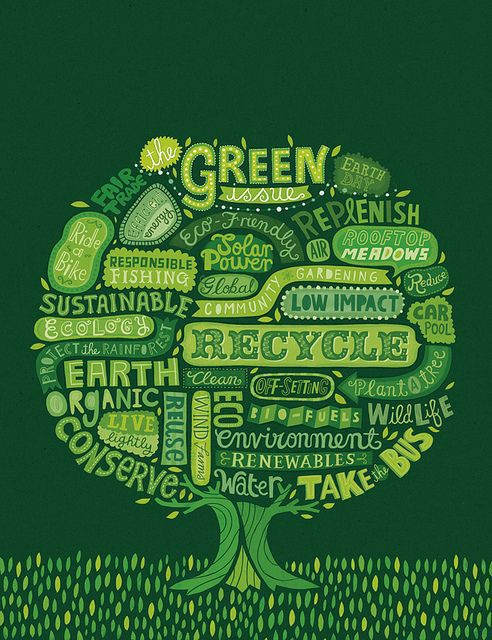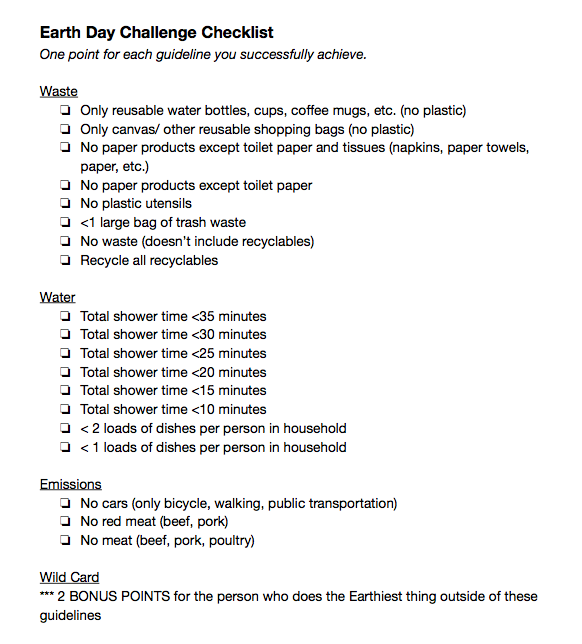In the week leading up to Earth Day, we wanted to provide you with some tips on how to be more environmentally friendly. And instead of just giving you a list of ideas, we decided to make it a little interesting by creating a contest for the members of the Moved team. This is the recap.
1. The guidelines:
We divided the set of rules into 3 categories: things that contribute to waste in our landfill and/or oceans, things that use water, and things that increase carbon emissions. The “wild card” category was just a little extra fun. The person who went the most above and beyond to help the Earth earned extra points. The contest lasted from Monday, April 9 until Friday, April 13, a period of 5 days.
2. Takeaways
For the first couple days, the guidelines took some getting used to (especially waking up on a Monday morning). Some of us forgot that the contest was even taking place until we got to work, realizing that our “total shower time” portion of the guidelines already took a big hit. Once we got more adjusted, living eco-friendly was hardly a burden in most cases.
Water
Outside of the early slip-ups, using less water was an fairly easy transition. Most of us had no problem cutting 3–4 minutes off of our showers, even 5–6 if we rushed. Everyone can certainly do that. Being more conscious with the amount of dishes and utensils we were using while cooking and eating also went a long way in having to wash less.
Waste
Creating little to no waste was VERY hard, like harder than we anticipated it would be (and we anticipated it would be pretty darn hard). You really don’t realize how much trash you go through in your daily life until you count it. That being said, while it probably isn’t possible to have no waste (at least for any extended period of time), there are several habits you can adopt that will contribute to less waste. Here’s some tips on that:
-
Bringing your lunch to work significantly reduces waste, especially if you bring it in a reusable lunch box or plastic container. As opposed to buying lunch, which usually comes in a paper bag with plastic utensils, more napkins than you could possibly use, and some type of plastic container, the only waste we used when we brought lunch were a few napkins and a plastic fork (depending on what we were eating).
-
There’s really just no reason to use paper towels when there is an air dryer readily available, and yet a lot of us have developed the habit of doing it. So maybe your hands were a little less dry for like 2 minutes, it’s worth it!
-
Get a reusable water bottle! This is the easiest thing imaginable. We were ALL able to do it, no problem. Nowadays, you can even get one that keeps your water cold for hours.
-
Recycle. Recycle. Recycle. Recycle. It seems like the biggest factor that prevents people from recycling is that that don’t exactly know what they can and can’t put in a recycling bin. It’s super easy to find a guide for any city on the internet. Here’s one for New York City.
Emissions
Lastly, but certainly not least, limiting emissions was not particularly hard for our team, as the majority of us live in New York City where having a car isn’t even an option. If you live in a suburban area, consider riding your bike or walking. You might even realize that just spending time being active outdoors is therapeutic. Red meat is also a tremendous factor in carbon emissions. We’re not saying eliminate it entirely from your diet, but even cutting back a little every week can make a big difference.
To be honest, succeeding in most of the categories came down to developing good habits. Once we got used to using less, it really wasn’t difficult, and often times even made us feel better about ourselves for the difference we were making.
3. The Winner
With a total of 17 points out of a possible 21, the runaway winner of our Earth Day contest was Erin White. Erin is a CXM here at Moved originally from Seattle, Washington. As the contest unfolded, we found out she does a lot of cool things to go above and beyond the general expectations of “living green” that we thought would be great for her to share. Here’s her story:
On Motivations…
Growing up in Seattle, people are much more environmental. Nature is a bigger part of daily life, and composting is required by law (!). Being brought up in this environment, Erin was exposed to the value of nature right away.
In New York (where Moved is located), Erin has a roommate who is a science teacher and former park ranger that is extremely passionate about the environment. She teaches kids about what environmental changes mean and the importance of recycling and composting. Having her around is a big driver to Erin’s eco-consciousness in her apartment, where they use cloth napkins instead of paper towels.
“She doesn’t use plastic of any kind so I’m nothing compared to her,” Erin jokes.
On what she does to help the planet…
In addition to the basics (recycling, carrying reusable water bottles, taking public transportation, etc.), Erin consolidates her plastic bags and brings them to recycling centers. She goes to Target, but tells us that all large stores that give out plastic bags are required by law to take them.
She also composts her food, a tall task anywhere let alone in New York City.
“It’s about a 20 minute walk to the composting center,” she says. Her and her roommates make a trip out of it. They’ll enjoy the walk or grab a bagel, something to make the trip a little more fun.
More than anything, Erin stresses the importance in being “intentional about it.” She stresses that 20 minutes here or there every week is really not much of a burden. It’s just something you have to keep up with.
On tips for people who want to be greener…
“Getting a reusable water bottle is so easy,” she tells us, noting that New York City water actually tastes great. She mentions how many cool varieties of reusable water bottles are out there. Hers has a little counter to tell her how much water she’s drank today.
Erin says that cloth napkins aren’t bad at all either, or you can just buy thin towels and use those.
She also tells us there’s tons of really cool environmentally friendly shops in Brooklyn. On that comes to mind, @zerowasteannual, uses the remnants of other clothing makers to create clothes of his own, creating zero waste! There’s also stores that don’t use tags on their clothing.
In closing…
Something Erin is working on now is being more conscious of where she gets gets her clothes and shopping secondhand. “Where do they come from? How were they produced? What impact does that have? Do I really need this?” are just some questions she asks herself.
“I don’t feel super environmentally friendly at all,” she says. “I have a friend doing zero waste in 2018. I know people with backyard composts and solar panels.” Her attitude is constantly forward thinking.
“It may seem like I do a lot, but there’s so much more I can do. There’s so much more everybody can do. It’s not like it impacts my quality of living.” If everyone had that attitude, the Earth would be a much cleaner place.
4. Conclusion
All in all, though some of us succeeded more than others, this exercise at the very least made us all much more conscious of how much we are actually using. The difference that spending a few less minutes in the shower or bringing a reusable water bottle to work had on our lives was insignificant, but the impact they could have on our planet if everyone did their part is massive.
















